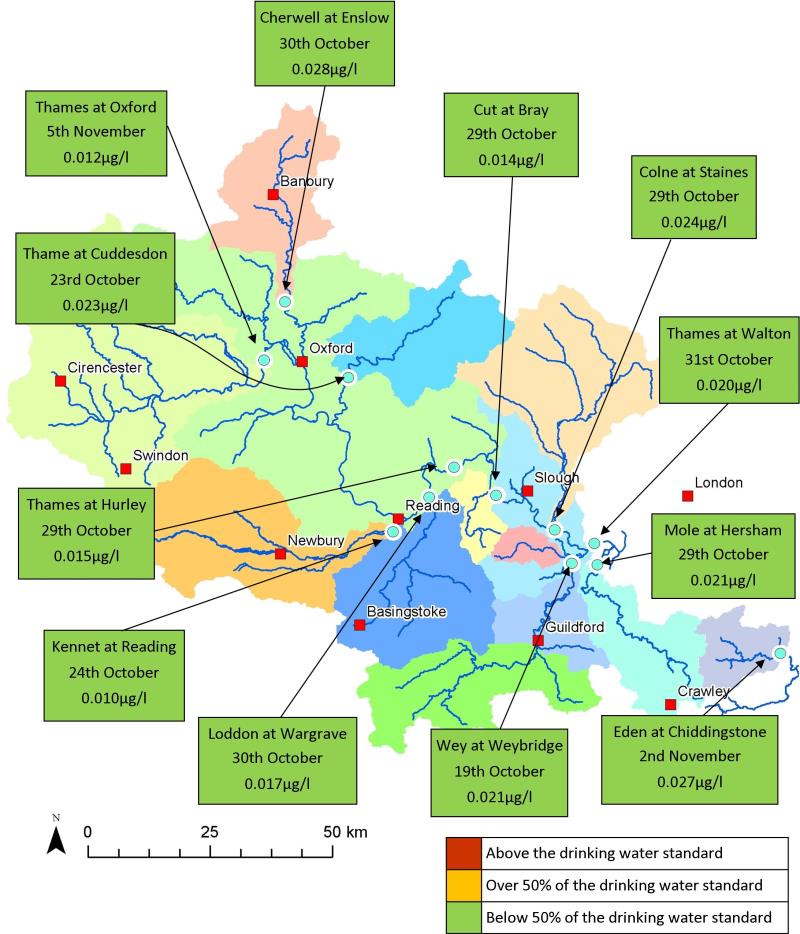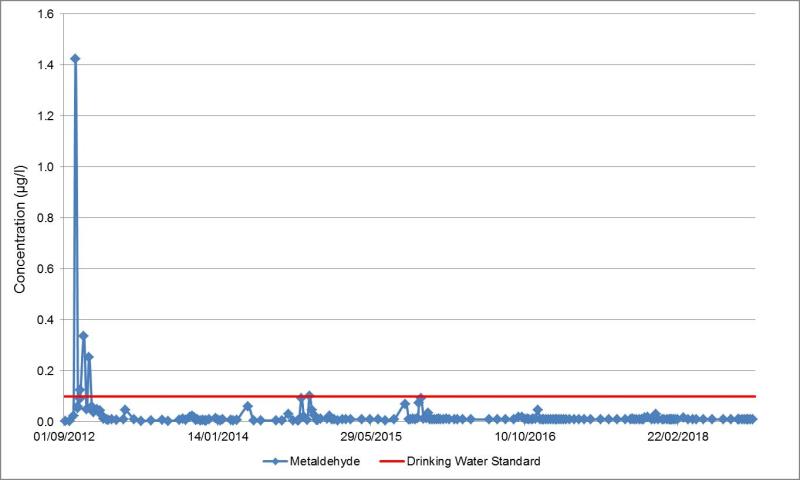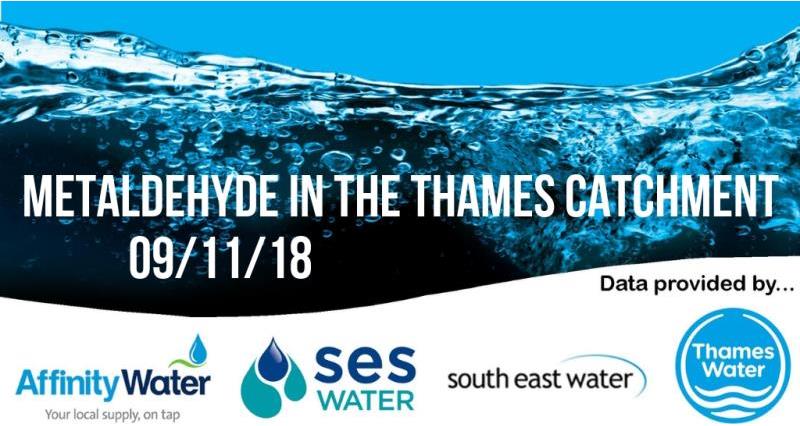Metaldehyde in the catchment
This autumn consider reducing reliance on chemical control measures by adopting a wider range of options in your Integrated Pest Management (IPM) programme to control slug numbers. If you need to use chemical control, please consider the use of ferric phosphate pellets instead of metaldehyde pellets and, as always, follow best practice guidelines. In some areas there are water company funded initiatives available to support you, so contact your local water company to find out more. Please note that contact details can be found at the bottom of this update.
Please see the map and graph below for 12 monitoring locations within the Thames catchment.
Latest Results
The latest catchment results show that metaldehyde concentrations have not exceeded the drinking water standard at any of the monitoring sites reported this week. As a result of recent rainfall, soils continue to wet up across the catchment and although most field drains are not currently flowing, rain forecast in the coming weeks could potentially mobilise metaldehyde that has already been applied. Please follow best practice if using any form of chemical slug control this season (www.getpelletwise.co.uk).

Focus on… Kennet at Reading
So far this autumn concentrations have remained below the drinking water standard of 0.1µg/l. Since monitoring began in 2008, there have been five results above the drinking water standard at the Kennet at Reading. Of these exceedances, four were recorded in autumn 2012 with a metaldehyde peak of 1.423µg/l in October, nearly 15 times the drinking water standard. Since autumn 2014, there have been no results recorded above the drinking water standard, although the metaldehyde concentration reached 0.093µg/l in November 2015. Much of the Kennet catchment is underlain by chalk, which tends to have light soils, relatively low slug pressure and limited surface runoff, which helps to protect the river from pesticides. However, there are areas within the Kennet catchment that have heavier soils and are therefore a higher risk for runoff and diffuse pollution which in some years can impact water quality. Consequently, although metaldehyde risk has not been high every year, historical data show that it can still be very high on occasion. As the Kennet is an important source of drinking water, it is very important to minimise the amount of metaldehyde in this river.

To find out more please contact:
Affinity Water: Q2F0Y2htZW50TWFuYWdlbWVudEBhZmZpbml0eXdhdGVyLmNvLnVr, SES Water: Y2F0Y2htZW50QHNlc3dhdGVyLmNvLnVr, South East Water: Y2F0Y2htZW50QHNvdXRoZWFzdHdhdGVyLmNvLnVr or Thames Water: Y2F0Y2htZW50Lm1hbmFnZW1lbnRAdGhhbWVzd2F0ZXIuY28udWs=
